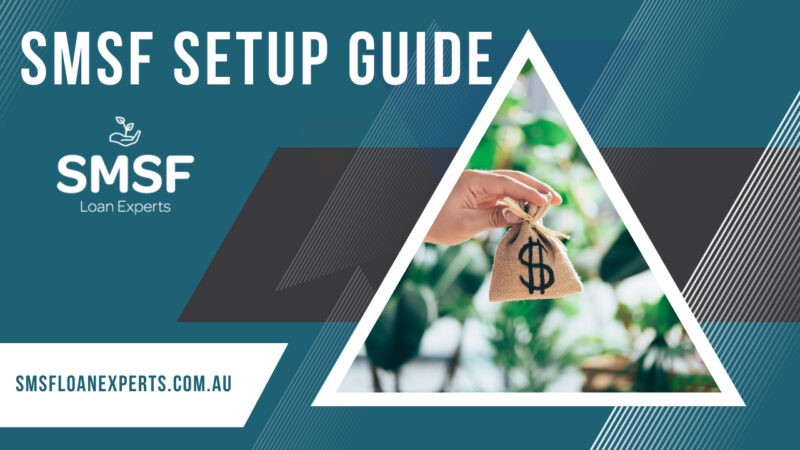Learn more about the basics of an SMSF setup
1. Have more control over your investments.
2. Access to wider investment options like property.
3. Get greater tax incentives.
4. Have the opportunity to maximise returns so that you can reach your retirement goals faster.
5. Have lower superannuation administration fees. For more information click here
John Collignon is a founding shareholder and Director of C2 Financial Group, a 100% Australian owned financial services company based in Sydney, Australia. Since starting off on his financial services career in Corporate Tax at Deloitte, John saw the opportunity in 2009 to establish a Self Managed Super Fund administration firm, allowing self directed clients to take control of their superannuation, helping over 1,500 SMSF trustees with their SMSF responsibilities and needs. https://c2financialgroup.com.au/about/
Video Transcript
YANNICK: To a new video today, we are going to be talking to John Collignon from C2 financials, and we’re going to talk about SMSF setups and a few things that apply to that. John, how are you going today?
JOHN: Well thanks for the introduction Yannick. Thank you.
YANNICK: Thank you for joining us. Johnny, I’m going to get straight into it. What is a self managed super fund?
JOHN: Self Managed Super Fund is a type of trust structure that is used to hold, people’s superannuation monies until they reach their retirement, or a preservation age where they want to access that money.
The big difference, I suppose, between a Self Managed Super Fund and a industry fund or a retail fund, what are known as APRA regulated funds is that, with those funds with an APRA fund or, you know, with the APRA fund, a retail fund or an industry fund, the trustee of that super fund, you probably are very likely to have never met in your life.
And they are effectively the people that are responsible for the running of, you know, 700,000 members, for example, with one of the big industry funds. With a self managed super fund, what actually makes the fund self-managed is the fact that you, yourself become the trustee of your own fund. And you’re also the member of your own fund. You can now have up to six members, so you’d need to have six trustee, or six directors of the corporate trustee.
And that in effect is the structure of a self-managed super fund or self managed super fund is a trust where you are the director trustee slash director of the trust itself.
And you’re also the member of that, and of the only members of, of that specific type of trust. And then there’s the, our self-managed super fund is also, it’s got some overarching trust rules, but it also has, is mainly controlled and dictated by, the superannuation legislation, which differentiates it to normal, uh, you know, family trusts or unit trusts, for example.
YANNICK: Okay. So you’ve got a, you’ve got an entity there that is different from an APRA fund, and it’s also different from a standard trust.So it’s a very specific type of trust you’ve got there.
John, you mentioned you can have up to six people in that Self Managed Super fund. Is there any requirements in terms of the relationship between those people or could it be just any six people or how does that work?
JOHN: It could be any six people. You don’t have to be related at all. There’s definitely challenges. This is only new. It only came at one July.
Typically it was four, uh, members in an SMSF. And the idea with six is, is, was the policy around that was for bigger families, to be able to get all their family members into the fund. Their issues with it, a lot of those, there’s a few issues with it. Being primarily, you know, you’re all at different ages in your life and you probably have different requirements that you want to, uh, you know, how you want to spend the money and how you want to allocate the money and when you want to access the money, you know, especially with illiquid assets, that can prove to be an issue.
So that’s one of the, and the other part of it is the, the administration side of it, having six directors having to sign off on everything, it’s very convincing. But there are advantages of it as well.
You know, obviously, you know, combined power combined purchasing power, you know, you all have a similar goal in mind to buy a big commercial property or a block of land or something like that.
You know, obviously the more money in the super fund gives you more purchasing power. So,that’s probably one of the key advantages of it, as well saving, saving on fees as well, because you can split between multiple members.
YANNICK: Yeah. So the fee per person would be going down. Yeah. Understood. Now that, that makes perfect sense.
Now you’ve mentioned the Self Management Super Fund is a trust. Are there any other entities that are involved in the setup of a self managed super fund, or is it solely that trust?
JOHN: There was a corporate trustee most typically most people use a corporate trustee. So there’s, uh, when you, when you’re just setting up a self managed super fund, you’d have a corporate trustee and you’d have an SMSF trustees.
So there’s two entities. If you’re just setting up an SMSF a standard SMSF. If you’re buying, using a loan to buy a property, for example, or shares for that matter, there needs to be a separate entity that sits outside of the self-managed super fund, which we know is typically known as a custodian trustee company. That custodian trustee company, holds the assets that are subject to the loan on trust for the self managed super fund or bare trust.
You might be read about, you might read about it on the internet. So that would be that there’d be four entities, effectively, four entities that are established.
If you are looking to set up an SMSF to buy an asset using loan.
YANNICK: Okay. Makes perfect sense. That probably takes me to some practical questions for people listening that they might be interested.
So I’ll just restate the date. Today’s the 22nd of July 21. If that video is being watched later, but, at present time, in your experience in terms of costs, you know, we, we’ve got the option of setting up a self managed super fund with just a corporate trustee. And then we look at potentially setting up a self managed super fund with the additional structures to purchase using a loan.
What would be the cost in, you know, industry standards to set up those structures and to administer those structures ongoing?
JOHN: Using, you know, broad brush approach to fees out there, if you, if you’re not looking for any sort of advice at all, um, the setup cost for a corporate trustee with an SMSF trust, and someone to set up the bank accounts, register them all for you, do your rollovers, everything you need there roughly between 1500 to two grand, including GST and the asset fees.
If you’re looking to then go forward and purchase, you need to purchase a property where you need the, the additional custodian trustee company bare trust, it’s usually another 1500 to two grand, so I’ve got three grand all up.
YANNICK: Yup, that makes perfect sense. On an ongoing basis, yourself may issue a tax return and then the tax return needs to be audited.
Is that correct?
JOHN: That’s correct. So one of the responsibilities for trust and even the SMSF is to be able to provide financials, a tax return and have them audited each year for the SMSF.
So those that’s a there’s many trustee responsibilities for an SMSF, but that’s a key one. And most trustees of SMSFs, well probably 99% of trustees of SMSF, I would assume, outsource that, that task, they don’t outsource the responsibility, they outsource the task. And so companies such as that, such as ours would produce the financials that would produce the, the tax return and we’d have it audited.
And so when we would then send them to the trustees to review and execute, and we would lodge it on their behalf with the ATO.
So that’s the documents that are required on an annual basis, you know, amongst a few others, but, uh, the cost to do that, you know, industry standards around the $2,000 mark, the service administration and accounting and all it’s an accounting in order.
YANNICK: Perfect. John that’s that’s gold. Last question to wrap up. If someone came to you tomorrow and asked you to set up a Self Managed Super fund for them, what sort of timeframe would you tell them to expect for that Self Managed Super Fund to be operational?
JOHN: Look, if you’re looking just if you know what you want to do, and you’re, what’s called an, a client director, uh, a self directed client.
So I should say about four to six weeks to get it off the ground. That includes the setup of the entities, the waiting for the ATO to receive the ABN, waiting for the HL to receive the ABA, uh, and doing the rollovers, and the bank account set up, get that four to six Weeks.
YANNICK: Yeah, the whole thing. That’s fantastic. And for everyone listening, if you want to talk, Self Management Super Fund with John or his colleagues, we’ll have all the details, in the video link below and yeah, let’s, let’s, let’s go from there, John.
Thank you so much for your time.
JOHN: Thanks Yannick. I appreciate it. And we’ll, we’ll chat soon. Cheers. Bye.







